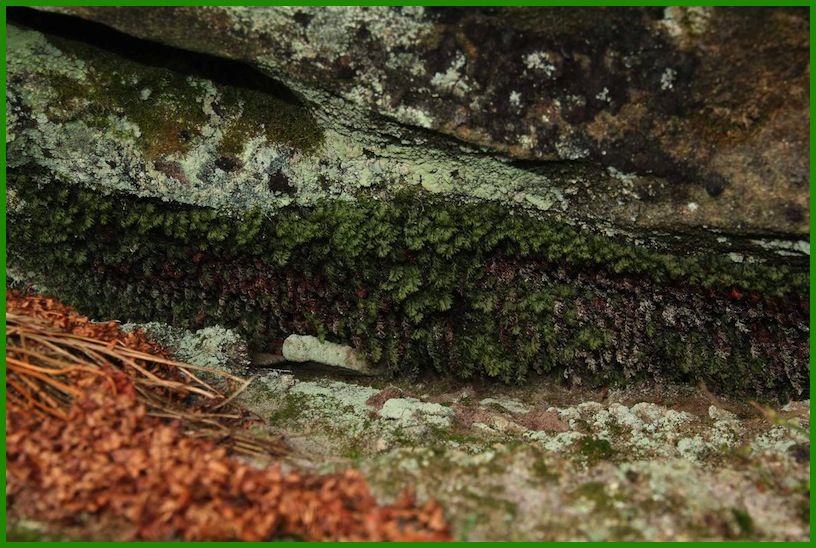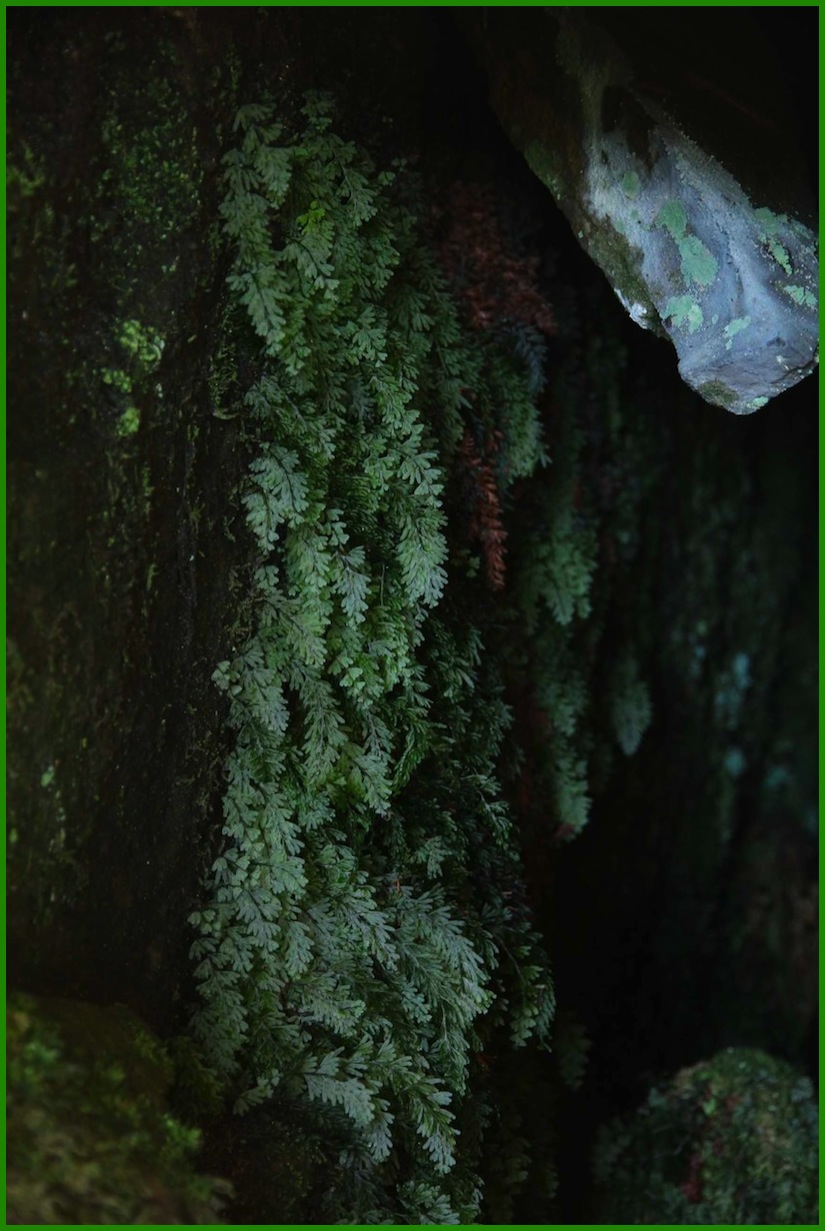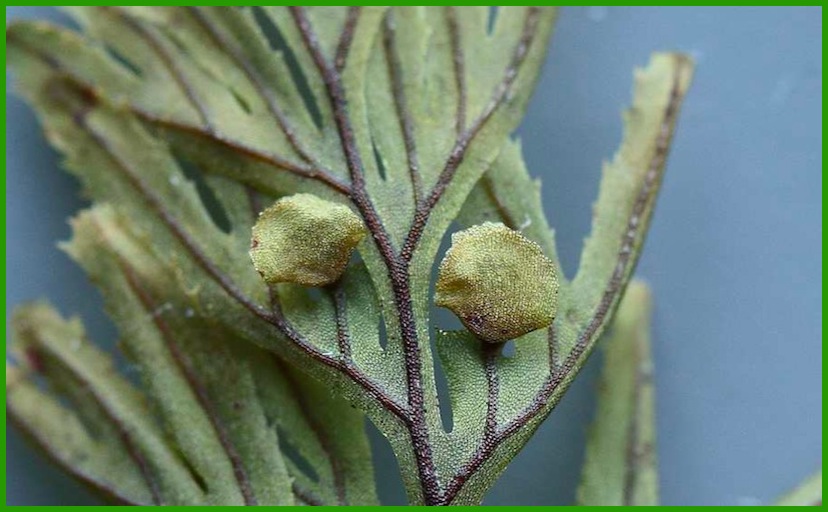Filmy-ferns ~ Hymenophyllum in the Bewcastle Fells, NE Cumbria
Filmy-ferns have been known on the higher gritstone ‘tors’ above Bewcastle in northeast Cumbria, close to the Northumberland border, since the Wilson’s Filmy-fern Hymenophyllum wilsonii was unearthed by Derek Ratcliffe on Tod Crag in 1957.
In 2005 Mike Porter found that a known patch on Long Crag at the south of the range was in fact Tunbridge Filmy-fern H. tunbrigense. (The nearest known localities for this species are the Lyne valley to the west where Dr Ratcliffe knew it on a single boulder – now apparently gone – and at a couple of sites at lower levels in Northumberland to the east. It was recently found luxuriantly growing in twelve patches on Spy Crags above Lampert, and on several crags in the Paddaburn area, above the upper Irthing valley, in western Northumberland.)
Surveys of the gritstone outcrops in the area of Christianbury Crags in 2009 and 2010 revealed more than twenty colonies of filmy-ferns over several miles, the majority being the Tunbridge Filmy-fern with fewer of Wilson’s Filmy-fern.
This work also revealed two colonies of a puzzling plant with some intermediate characters. Initially thought to be a form of Tunbridge Filmy-fern, closer examination revealed spore abortion, and many characters intermediate between Tunbridge and Wilson‘s Filmy-ferns, suggesting a hybrid origin. Dr Fred Rumsey has confirmed the plants in both colonies as the hybrid between those two species, supported by DNA work at the British Museum.
Surprisingly, this hybrid is new to science! (A polyploid complex known in Madeira is evidently derived from this hybrid, but the hybrid itself has not yet been confirmed there.)
The hybrid has been formally named in New Journal of Botany, Volume 1, number 2 (2011), pp. 93–97 [New Hymenophyllum hybrid from the British Isles: Hymenophyllum × scopulorum F.J. Rumsey & F.J. Roberts (Hymenophyllum tunbrigense (L.) Sm. × H. wilsonii Hook., Hymenophyllacea), F.J. Rumsey & F.J. Roberts]. Offprint available as a downloadable PDF, although at cost (free to BSBI members).
An article with much more information (The Filmy-ferns of the Bewcastle Fells) in The Pteridologist (Volume 5, part 6, 2013, pp. 424–428) is freely available to download! (Note my email address given there is now defunct.)
The outcrops supporting the two colonies of Hymenophyllum × scopulorum are separated by a mile of open heather moorland. It is an intriguing puzzle as to how these two colonies of a sterile fern with slow lateral growth and no other methods of propagation became established.
Do they derive from two separate hybridisation events of what appears to be a very rare occurrence?
Did the plant arise once, and somehow spread so that it now occurs in two well-separated sites?
Can the plant produce some fertile spores? – or has it done so in the past?
None of these possibilities seems anything other than remote... but some sequence of events has brought about the existing situation! See the paper above for discussion.
The gametophyte of Killarney Fern Trichomanes (Vandenboschia) speciosum was also found at one of the Tunbridge Filmy-fern sites in October 2011 by Bruce Brown and Alison Evans, and in 2017 by Mary Gibby at one of the hybrid sites. It may very well be frequent in the myriad dark crevices in the Bewcastle tors.
Tunbridge Filmy-fern (Bewcastle Fells, 2010)
A typical site for Tunbridge Filmy-fern! (Bewcastle Fells, 2010)
Wilson’s Filmy-fern (Bewcastle Fells, 2010)
The hybrid filmy-fern (Bewcastle Fells, 2010)
The hybrid filmy-fern, indusia
Back to ⇒Homepage
